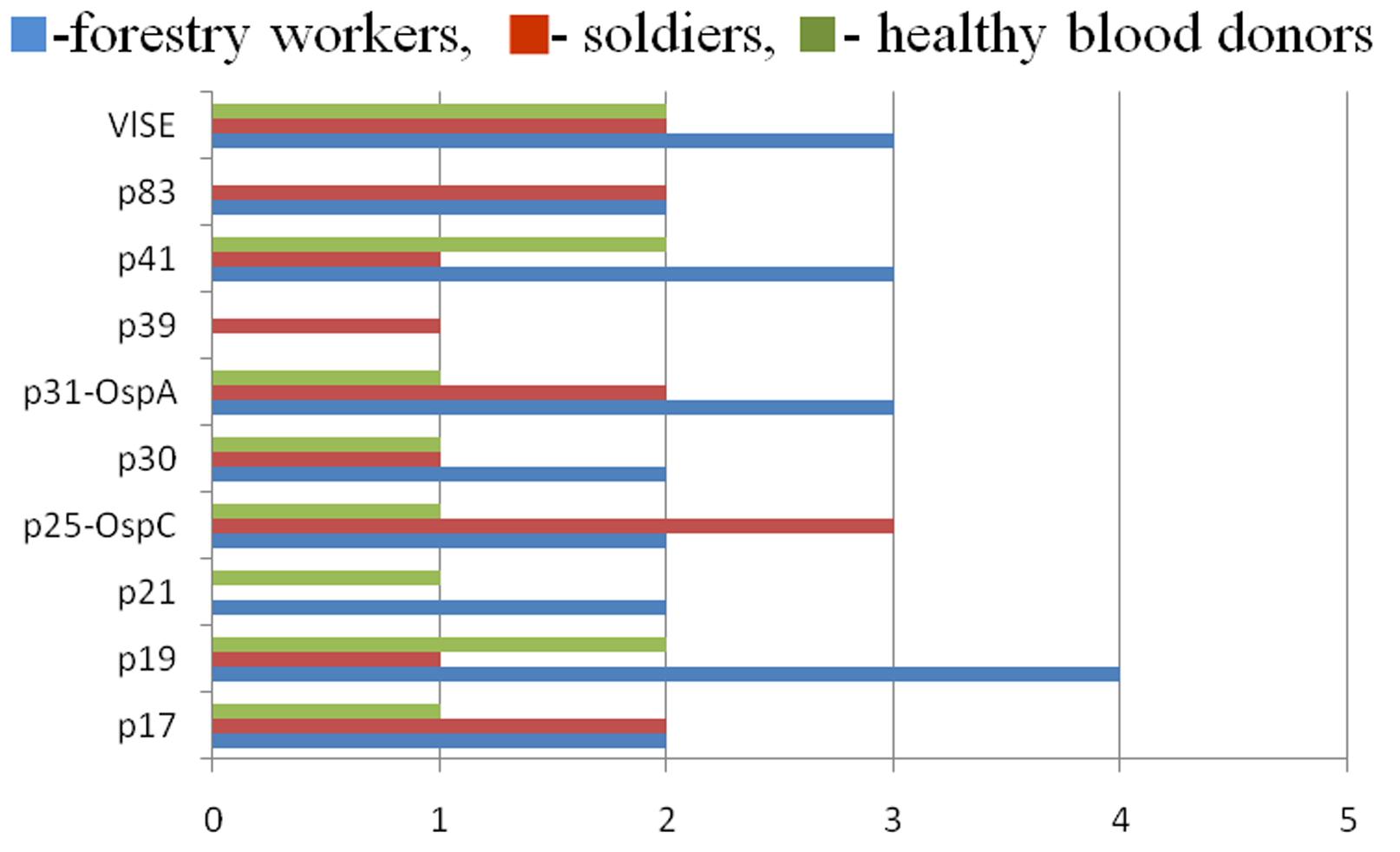Lyme disease (LD) is a natural focal zoonotic disease caused by Borrelia burgdorferi, which is mainly transmitted through infected Ixodes ricinus tick bites. The presence and abundance of ticks in various habitats, the infectivity rate, as well as prolonged human exposure to ticks are factors that may affect the infection risk as well as the incidence of LD. In recent years, 20% to 25% of ticks infected with different borrelial species, as well as about 5,300 citizens with LD, have been registered in the Belgrade area. Many of the patients reported tick bites in city’s grassy areas. The aim of this study was to assess the seroprevalence of B. burgdorferi in high-risk groups (forestry workers and soldiers) in the Belgrade area, and to compare the results with healthy blood donors. A two-step algorithm consisting of ELISA and Western blot tests was used in the study. Immunoreactivity profiles were also compared between the groups. The results obtained showed the seroprevalence to be 11.76% in the group of forestry workers, 17.14% in the group of soldiers infected by tick bites and 8.57% in the population of healthy blood donors. The highest IgM reactivity was detected against the OspC protein, while IgG antibodies showed high reactivity against VlsE, p19, p41, OspC, OspA and p17. Further investigations in this field are necessary in humans and animals in order to improve protective and preventive measures against LD.
Borrelia burgdorferi ; Lyme disease; seroprevalence; forestry workers; soldiers


